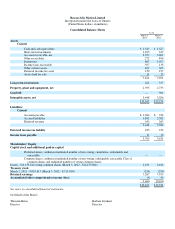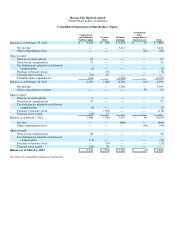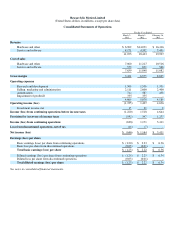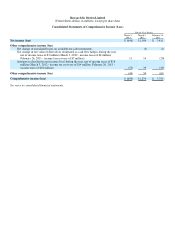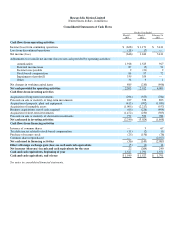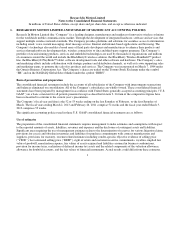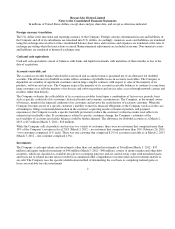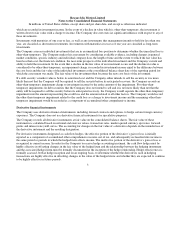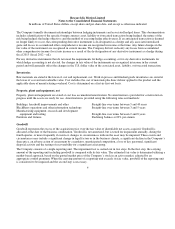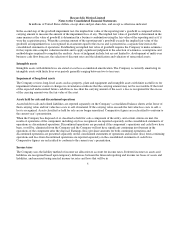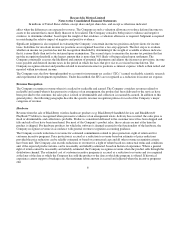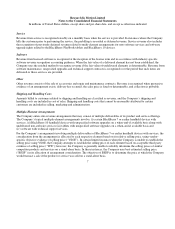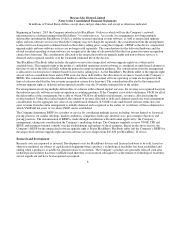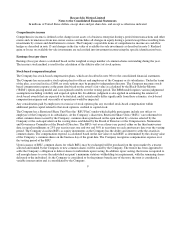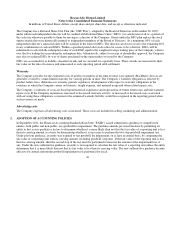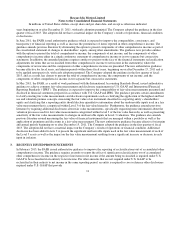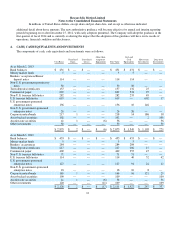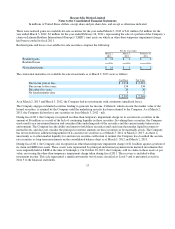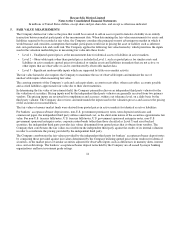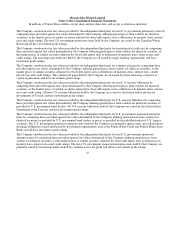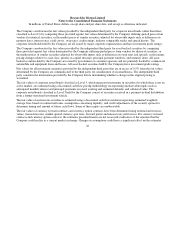Blackberry 2013 Annual Report Download - page 122
Download and view the complete annual report
Please find page 122 of the 2013 Blackberry annual report below. You can navigate through the pages in the report by either clicking on the pages listed below, or by using the keyword search tool below to find specific information within the annual report.
Research In Motion Limited
Notes to the Consolidated Financial Statements
In millions of United States dollars, except share and per share data, and except as otherwise indicated
effect when the differences are expected to reverse. The Company records a valuation allowance to reduce deferred income tax
assets to the amount that is more likely than not to be realized. The Company considers both positive evidence and negative
evidence, to determine whether, based upon the weight of that evidence, a valuation allowance is required. Judgment is required
in considering the relative impact of negative and positive evidence.
Significant judgment is also required in evaluating the Company’s uncertain income tax positions and provisions for income
taxes. Liabilities for uncertain income tax positions are recognized based on a two-step approach. The first step is to evaluate
whether an income tax position has met the recognition threshold by determining if the weight of available evidence indicates
that it is more likely than not to be sustained upon examination. The second step is to measure the income tax position that has
met the recognition threshold as the largest amount that is more than 50% likely of being realized upon settlement. The
Company continually assesses the likelihood and amount of potential adjustments and adjusts the income tax provisions, income
taxes payable and deferred income taxes in the period in which the facts that give rise to a revision become known. The
Company recognizes interest and penalties related to uncertain income tax positions as interest expense, which is then netted and
reported within investment income.
The Company uses the flow-through method to account for investment tax credits (“ITCs”) earned on eligible scientific research
and experimental development expenditures. Under this method, the ITCs are recognized as a reduction to income tax expense.
Revenue Recognition
The Company recognizes revenue when it is realized or realizable and earned. The Company considers revenue realized or
realizable and earned when it has persuasive evidence of an arrangement, the product has been delivered or the services have
been provided to the customer, the sales price is fixed or determinable and collection is reasonably assured. In addition to this
general policy, the following paragraphs describe the specific revenue recognition policies for each of the Company’s major
categories of revenue.
Hardware
Revenue from the sale of BlackBerry wireless hardware products (e.g. BlackBerry® handheld devices and BlackBerry®
PlayBook™ tablets) is recognized when persuasive evidence of an arrangement exists, delivery has occurred, the sales price is
fixed or determinable, and collection is probable. Product is considered delivered to the customer once it has been shipped and
title and risk of loss have been transferred. For most of the Company’s product sales, these criteria are met at the time the
product is shipped. For hardware products for which the software is deemed essential to the functionality of the hardware, the
Company recognizes revenue in accordance with general revenue recognition accounting guidance.
The Company records reductions to revenue for estimated commitments related to price protection, right of return and for
customer incentive programs. Price protection is accrued as a reduction to revenue based on estimates of price reductions
provided the price reduction can be reliably estimated or based on contractual caps and all other revenue recognition criteria
have been met. The Company also records reductions to revenue for a right of return based on contractual terms and conditions
and, if the expected product returns can be reasonably and reliably estimated, based on historical experience. Where a general
right of return cannot be reasonably and reliably estimated, the Company recognizes revenue when the product sells through the
distribution channel. The estimated cost of customer incentive programs is accrued as a reduction to revenue and is recognized
at the later of the date at which the Company has sold the product or the date at which the program is offered. If historical
experience cannot support a breakage rate, the maximum rebate amount is accrued and adjusted when the incentive programs
end.
6


